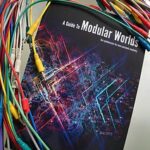Welding is a crucial process in many industries, and ensuring the quality and integrity of welds is paramount. This is where welding inspection comes in. A Certified Welding Inspector (CWI) plays a vital role in verifying that welds meet the required standards and specifications. This guide provides a concise overview of welding and weld inspection, touching upon key aspects relevant to the field.
Understanding Welding Processes
Welding involves joining two or more materials, typically metals, by causing fusion. Numerous welding processes exist, each with its own set of characteristics and applications. Some common welding methods include:
- Shielded Metal Arc Welding (SMAW): Also known as stick welding, this is a manual process using a consumable electrode covered in flux.
- Gas Metal Arc Welding (GMAW): Also known as MIG welding, this process uses a continuously fed wire electrode and a shielding gas to protect the weld from contamination.
- Gas Tungsten Arc Welding (GTAW): Also known as TIG welding, this process uses a non-consumable tungsten electrode and a shielding gas to produce high-quality welds.
- Submerged Arc Welding (SAW): This process uses a continuously fed wire electrode and a granular flux to shield the weld.
Alt text: A welder performing Shielded Metal Arc Welding (SMAW), also known as stick welding.
The selection of the appropriate welding process depends on factors such as the materials being joined, the thickness of the materials, the welding position, and the required weld quality.
The Role of a Welding Inspector
A welding inspector is responsible for verifying that welds meet the specified requirements. This involves a range of tasks, including:
- Reviewing Welding Procedure Specifications (WPSs) and Procedure Qualification Records (PQRs): WPSs provide detailed instructions for performing a specific welding process, while PQRs document the results of welding procedure qualification testing.
- Inspecting Materials: Welding inspectors verify that the base materials and welding consumables meet the required specifications.
- Monitoring Welding Processes: Welding inspectors observe the welding process to ensure that it is performed according to the WPS.
- Performing Visual Inspections: Visual inspection is a critical part of weld inspection, involving a thorough examination of the weld surface for defects such as cracks, porosity, and undercut.
- Conducting Non-Destructive Testing (NDT): NDT methods, such as radiographic testing, ultrasonic testing, magnetic particle testing, and liquid penetrant testing, are used to detect subsurface defects.
Alt text: A close-up view of various welding inspection tools, including a welding gauge, ruler, and flashlight, highlighting the precision required in weld assessment.
CWI Certification and Recertification
The American Welding Society (AWS) offers the Certified Welding Inspector (CWI) certification, which is widely recognized as a mark of competence in weld inspection. To become a CWI, candidates must pass a rigorous examination that covers welding fundamentals, welding inspection techniques, and codes and standards.
CWIs are required to recertify every nine years to demonstrate their continued competence and stay current with industry advancements. Several options are available for recertification:
-
Part B Practical Exam: This hands-on exam assesses the CWI’s ability to apply WPSs and PQRs, use inspection tools and methods, and execute required welds. Refer to the CWI Part B Examination Information Guide for more details.
-
Continuing Education: CWIs can recertify by accumulating 80 Professional Development Hours (PDHs) through relevant continuing education activities. These activities must cover subject areas defined in the AWS B5.1:2013-AMD1 specification. AWS offers a wide range of educational opportunities, including in-person workshops and online courses, on their Education homepage.
-
Certified Radiographic Interpreter (CRI): A CWI who meets the prerequisites can obtain the CRI certification, which satisfies the CWI recertification requirement. More information about the CRI credential can be found here.
-
Adding an Endorsement: CWIs can add endorsements to their certifications by successfully completing an endorsement exam up to 11 months before their certification expires. This also satisfies recertification requirements. However, the same endorsement codebook used for the original certification cannot be used for recertification purposes. The endorsement catalog provides details on available endorsements, requirements, and reference materials.
Conclusion
Welding and weld inspection are essential for ensuring the safety and reliability of welded structures. A qualified welding inspector plays a critical role in this process, and the CWI certification is a valuable credential for professionals in this field. By understanding the principles of welding and weld inspection, and by staying current with industry standards and practices, individuals can contribute to the integrity of welded structures and the safety of the public.
